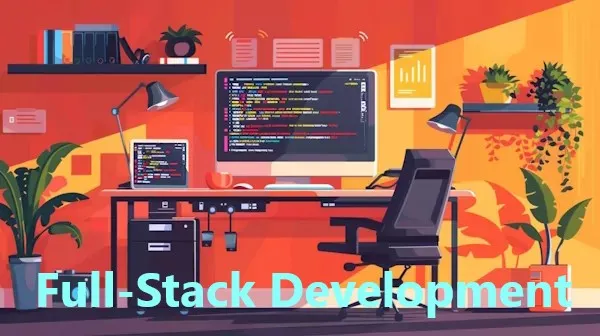
A full-stack developer is someone who can create both the front-end and back-end components of a software application or website. Let me break it down for you:
-
Front-end (Client Software):
- This is what users interact with directly. It includes:
- HTML (for structuring content)
- CSS (for styling)
- JavaScript (for interactivity)
- Libraries and frameworks like Angular, React, or Vue. -
Back-end (Server Software):
- Handles server-side logic, data processing, and communication with databases. It involves:
- Programming languages like PHP, Python, or Node.js
- Databases (e.g., SQL, SQLite, or MongoDB)
- Server frameworks (e.g., Express.js, Django, or Ruby on Rails)
Being a full-stack developer allows you to:
- Understand the entire development process.
- Rapidly create prototypes.
- Assist team members.
- Reduce project costs and communication time.
- Switch between front-end and back-end as needed.
However, it's increasingly complex due to the ever-evolving tech landscape. 🚀
What skills do I need to become a full-stack developer?
Certainly! Becoming a full-stack developer requires a diverse skill set that spans both front-end and back-end development. Here are the essential skills you'll need:
-
Frontend Skills:
- HTML: Hypertext Markup Language for structuring webpages.
- CSS: Cascading Style Sheets for styling.
- JavaScript: Essential for interactivity.
- Libraries like React, Angular, or Vue. -
Backend Skills:
- Programming Languages: Proficiency in languages like Java, Python, or Ruby on Rails.
- Database Technologies: Understanding of SQL, MongoDB, or other database systems.
- Server Frameworks: Familiarity with tools like Node.js or Flask.
- Web Architecture: Knowledge of backend design principles.
- Version Control: Experience with tools like Git and GitHub.
- HTTP and REST: Understanding of communication protocols.
- Database Storage: Handling data storage. -
Additional Skills:
- Design Fundamentals: Both frontend and backend design skills.
- Attention to Detail: Crucial for quality code.
- Organization and Prioritization: Managing complex projects.
- Effective Communication: Collaborating with teams.
Remember, continuous learning and adaptability are key! 🚀
Front-End Frameworks in Full Stack
In full-stack development, the front-end framework refers to the technology used to build the user-facing part of an application. It's responsible for creating interactive and visually appealing interfaces. Here are some popular front-end frameworks:
- React.js: Developed by Facebook, React.js is a JavaScript library for building user interfaces. Its component-based architecture and virtual DOM make it efficient for creating dynamic web applications. When combined with Node.js on the backend, you can build high-performance applications.
- Vue.js: An open-source frontend framework, Vue.js provides a flexible component architecture and reactive data binding. It's lightweight and practical, making it a great choice for developers.
- Angular: Developed and maintained by Google, Angular is widely used for building scalable single-page web applications. It uses TypeScript and offers features like automated form validation and two-way data binding.
Remember, full-stack development involves both frontend and backend components, combining technologies like HTML, CSS, JavaScript, and backend frameworks like Node.js or Django. If you're interested in creating a full-stack web application, consider learning these frameworks! 😊🚀